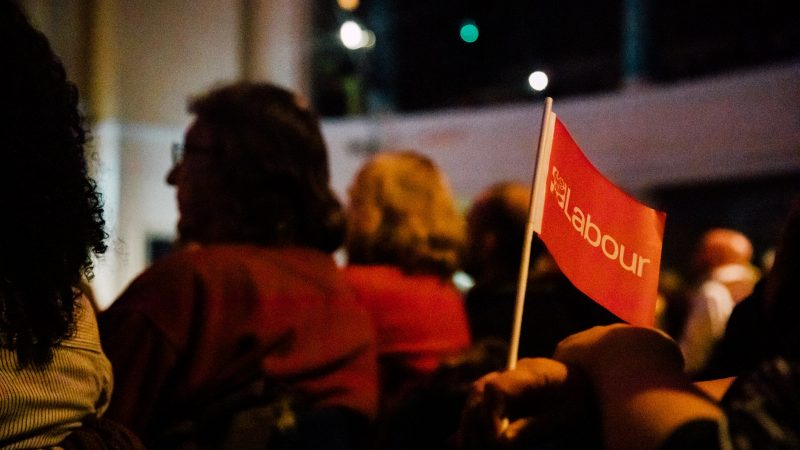
Labour Party membership has fallen by almost 170,000 since 2018 and by approximately 19,000 since last summer, despite tens of thousands of members joining the party over the last year, new figures suggest.
The changes suggest an under-reported influx of Keir Starmer supporters, but one more than offset by a continued exodus of Jeremy Corbyn supporters.
Some party figures criticised the leadership over the fall, while others argued that it was part of a natural cycle between general elections.
Membership has fallen by almost 170,000 since the end of 2017
The latest figure for Labour’s membership is 395,811 including 17,233 in arrears, according to separate reports from national executive committee (NEC) members Ann Black and Luke Akehurst following the NEC meeting earlier this month.
Black and Akehurst report that 48,295 people have joined the party in the last 12 months, with 15,000 joining so far this year.
But Labour membership stood at approximately 415,000 in July last year, with around 33,000 in arrears, according to the NEC reports produced by Black and Akehurst at the time – meaning there has been a net loss of approximately 19,189 members since last summer.
The latest figure also represents a fall of approximately 168,632 since the end of 2017, when party membership reached a recent peak of 564,443 during Corbyn’s time as leader.
According to the most recent annual figures submitted by the party to the Electoral Commission – published in August last year – the number of Labour members fell by more than 90,000 in 2021, from 523,332 to 432,213 at the end of that year.
Leadership at fault for fall, some party figures claim
Simon Fletcher, a former adviser to Keir Starmer, Corbyn and Ed Miliband, said: “With a growing sense that the Tories are close to being removed from office, it ought to be of concern to Labour that its membership has declined.
“A party on the verge of government should want to be enthusing more people to turn their support into full membership – but however much the party is recruiting new members, this currently simply doesn’t outweigh a falling membership overall.”
Fletcher said it was “easy” to see why membership numbers were down, arguing that members felt “disempowered” over parliamentary selections and that party messaging “has left many people feeling unenthused”.
“A Labour government needs to be sure of support from its own base – including its membership – to sustain itself during difficult times and in order to win subsequent elections. Presently, far too many feel taken for granted.”
Momentum co-chair Kate Dove agreed it was “concerning” to see Labour’s membership drop again. She accused Starmer of having “denied local parties a fair say in selections, repeatedly ignored the will of conference and concentrated power in the hands of a small number of people”.
Dove claimed Labour was “turning away from its identity as a mass movement powered and funded by trade unionists and socialists and returning to the bad old days of New Labour”.
Other party voices argue it is not a cause for concern
But former adviser to Tony Blair John McTernan argued that “the people who are leaving are the right people to leave”, telling LabourList: “The Labour Party under Jeremy Corbyn became large.
“But it filled up with people who are not from the Labour family and not from the Labour Party tradition and are better off back in the fringe far-left organisations that they were members of.”
McTernan argued that the party has got “fewer but better members”, declaring that membership is “not a numbers game” and that there is “quality as well as quantity”.
“The proof of the strength of the current membership is the week-in-week-out performance in council by-elections and what we’ve seen in the most recent council elections,” he said.
On the reasoning behind the influx of almost 50,000 members over the last year, McTernan said: “People like the look of a successful party, and so it brings them out of passive into active membership. People are joining the Labour Party because there’s a momentum both of ideas and activism and election results.”
One NEC source added: “Membership always declines in between general elections, and actually, these figures are very healthy for this point in the cycle. The rate of natural attrition is lower than we’d usually expect.
“The influx of new members is also very welcome. There’s been a change in the political composition of Labour members – it’s very obvious that many Corbyn-era members have departed, but the majority have been replaced by new members who are enthusiastic about the direction Keir is taking the party in.
“The entire recent history of the Labour Party suggests the immediate general election campaign and month after it will see a big guaranteed influx of new members. People join if Labour wins and join if it loses.”
Party membership numbers have also been disputed in the past, with questions raised over how far members in arrears could or should be included.
The Labour Party has been contacted for comment.




More from LabourList
Supreme Court trans ruling: Ban on CLPs and branches backing ‘unlawful position’
‘How we can build a strong political centre and centre-left’
‘Building the UK’s best network: delivering digital opportunity for every community’